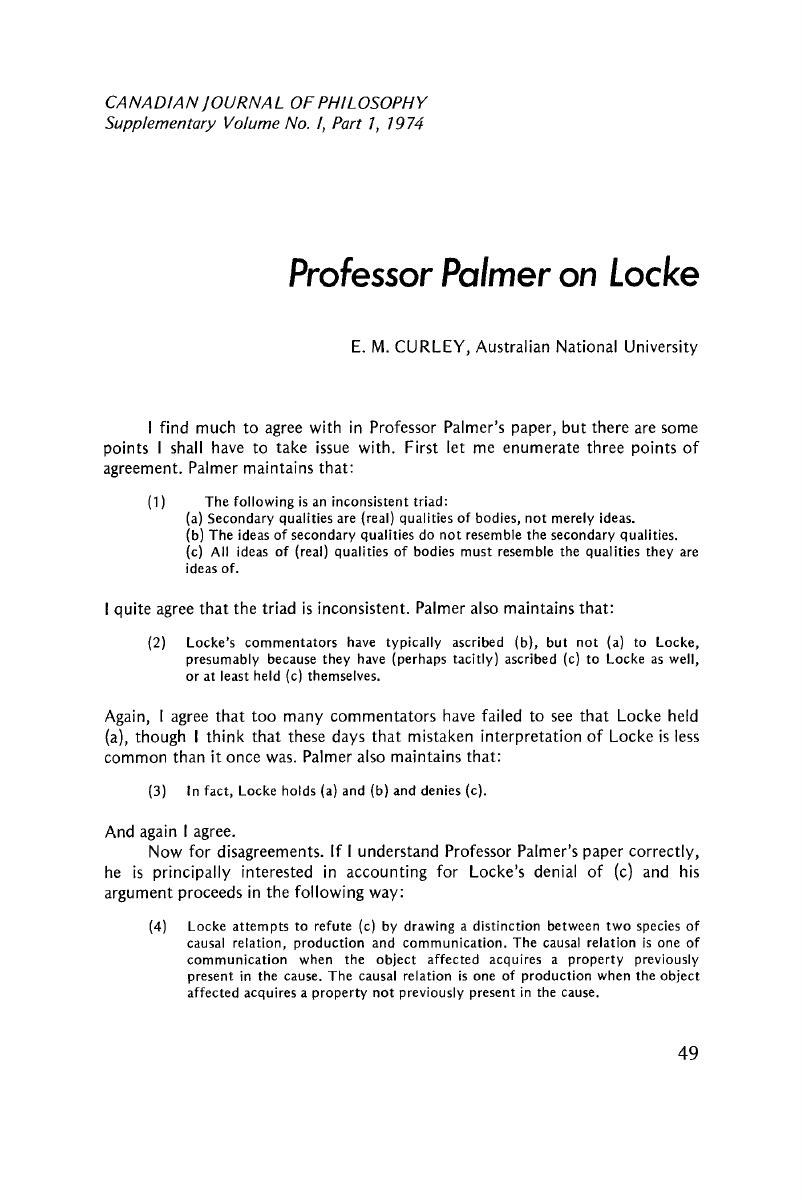No CrossRef data available.
Article contents
Professor Palmer on Locke
Published online by Cambridge University Press: 01 January 2020
Abstract

- Type
- Other
- Information
- Canadian Journal of Philosophy Supplementary Volume , Volume 1 , Issue 1: New Essays in the History of Philosophy , 1975 , pp. 49 - 52
- Copyright
- Copyright © The Authors 1975
References
1 Palmer speaks (p. 45) about the colour being ‘effected in us’ and suggests in one place (p. 46) that what would be required (in the case of colour) for resemblance would be that my eyes should acquire a colour present in the object affecting them. Elsewhere (p. 46) he speaks of the idea as being a resembling quality in us. But I take it that for Locke the term of the causal relation whose resemblance or lack of it is in question is the idea. No doubt the notion of resemblance between idea and quality has to be understood metaphorically. But we should be wary of cashing the metaphor in any way which would suggest that when I perceive something yellow, either my eyes are yellow or some other part of my body is yellow.
2 Here I follow the account given in my “Locke, Boyle and the Distinction Between Primary and Secondary Qualities,” Philosophical Review, 81 (1972), 438-464.




